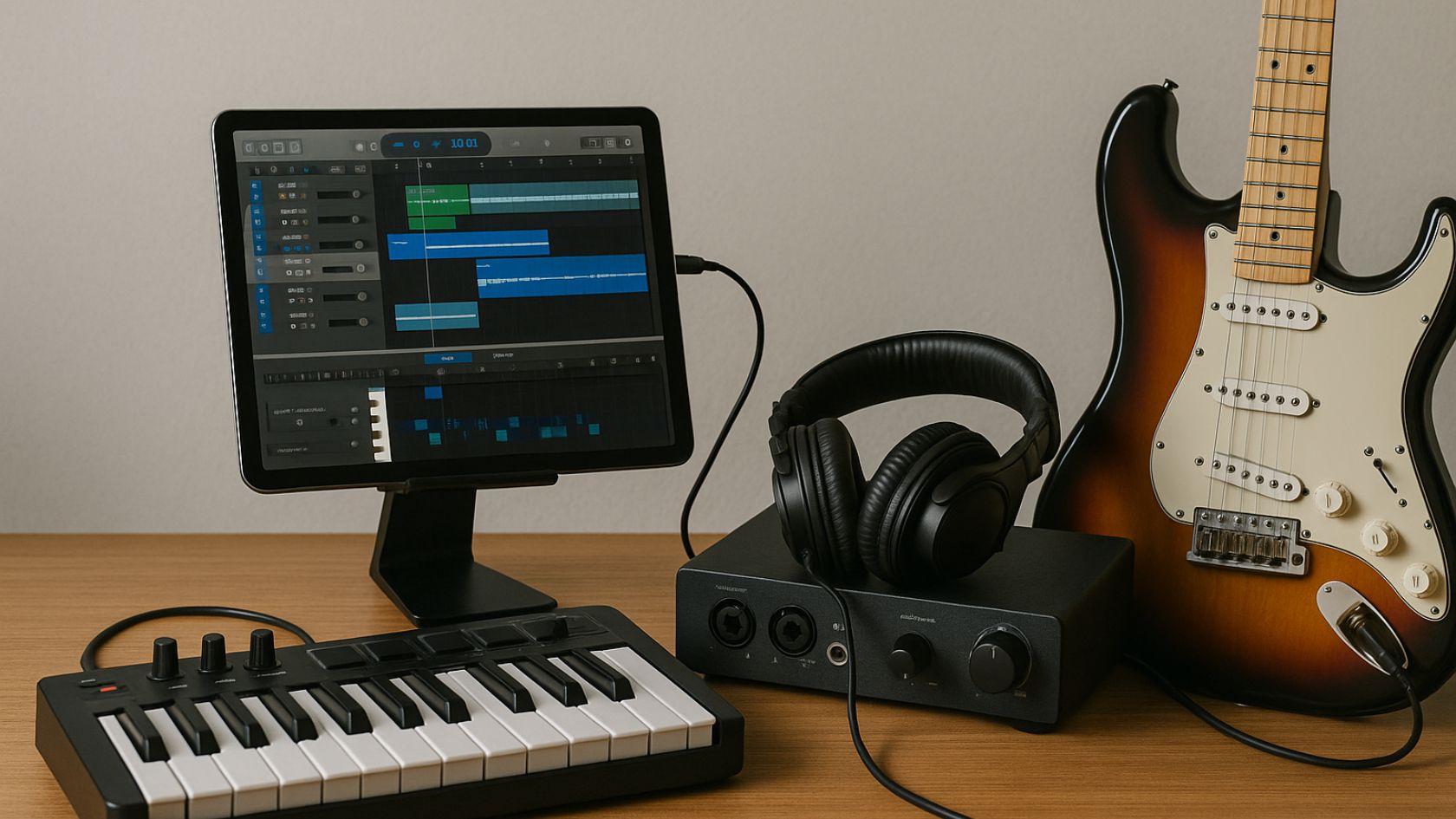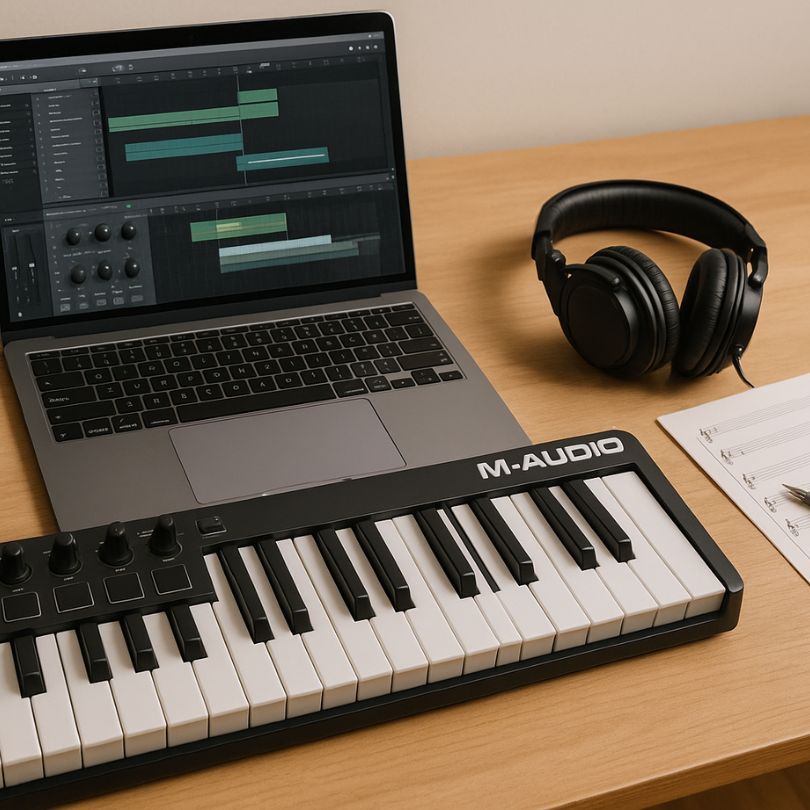
Top Music Programs: The Best Paths, Tools, and Courses to Level Up Your Sound

Top music programs are your fastest route to mastering production, composition, performance, and the business skills needed to build a sustainable music career. Whether you’re choosing a university degree, a self-paced course, or pro-grade software, the right program can compress years of trial-and-error into months—if you know how to evaluate your options and follow a consistent practice routine.
Before we dive in, let’s define what “programs” means in the music niche: it includes academic degrees, online courses and bootcamps, coaching and mentorship communities, and the software you use to produce, mix, and distribute music. You’ll get the most value by matching your goals to the right format and by learning from real artists’ experiences in communities like this Reddit thread where people share how they discover fresh tracks and refine their sound.
In practice, most creators blend two or three tracks at once: a foundational learning program (e.g., Berklee Online or a Coursera specialization), a primary software program (your DAW), and a community or mentor that provides feedback loops. This trio keeps you moving: curriculum for structure, tools for execution, and critique for growth.
As you evaluate options, think in systems, not one-off hacks. For example, planning weekly practice, monthly releases, and quarterly goals benefits from a simple content calendar you’ll actually use—see this content calendar strategy for a step-by-step model you can adapt for songwriting, production sessions, and social drops.
Quick Shortlist: Top Programs by Category
Best Software (DAWs)
- Ableton Live — unmatched for live performance and electronic production.
- FL Studio — patterns-first workflow for beatmakers and sample-heavy work.
- Logic Pro — buttery stock instruments and pro mixing on macOS.
- Pro Tools — industry standard for recording and post-production.
- Reaper — ultra-light, customizable, and budget-friendly.
Best Learning Paths
- Berklee Online — accredited courses in production, songwriting, and business.
- Coursera/edX — university-backed sequences in theory, sound design, and mixing.
- MasterClass — artist-led creative insights (complements technical study).
- Producer Dojo/IO Music Academy — mentorship and feedback-driven learning.
How to Choose the Right Program: A 7-Step Method
- Define your outcome (12 months): release an EP, get 10K monthly listeners, land sync placements, or become a freelance mixer.
- Choose your primary lane: production, performance, composition, audio engineering, or music business.
- Pick a program format that fits your life: degree, bootcamp, cohort, self-paced course, or mentorship.
- Map skills to milestones: e.g., by Month 3 know gain staging, basic EQ, arrangement; by Month 6, complete 3 full mixes.
- Audit the curriculum for project-based work and feedback cadence (weekly critique trumps passive videos).
- Budget for tools: DAW, audio interface, monitors/headphones, key plugins (more below).
- Create a practice system: 5 sessions/week × 60–90 minutes, with a weekly deliverable (beat, mix, or arrangement).
Top Software Programs (DAWs and Essential Tools)
Your DAW is the engine of your workflow. Pick one and commit for 6–12 months. The truth: all major DAWs can get pro results—the best one is the one you’ll open daily.
Ableton Live
Ableton’s Session View makes ideation frictionless—record loops, jam, and capture happy accidents. The stock instruments (Wavetable, Drum Rack) and audio-to-MIDI features are enough to ship full tracks without third-party plugins.
FL Studio
Pattern sequencing, Piano Roll power tools, and lifetime free updates make FL a long-term bet. Great for hip-hop and EDM producers who sketch drums first.
Logic Pro
Logic’s Drummer, Alchemy, Live Loops, and Spatial Audio support make it a powerhouse for songwriters and producers in the Apple ecosystem.
Reaper
Lean install, deep routing, and surgical customization. If you like tinkering, Reaper can become the most efficient environment you’ve ever used.
Plugin Starter Pack (Budget-Friendly)
- EQ/Compression: stock DAW tools are enough to go pro.
- Limiter: LoudMax (free) or Limitless (premium) for clean loudness.
- Saturation: Softube Saturation Knob (free) or FabFilter Saturn.
- Reverb/Delay: Valhalla Supermassive (free), Valhalla VintageVerb.
- Utility: SPAN (spectrum), Youlean Loudness Meter (free).
Top Educational Programs (Online and Degree)
Berklee Online
Accredited courses with rigorous assignments and pro feedback. Ideal if you want structure and a credential. Expect project deadlines and collaborative work.
Coursera/edX Sequences
Flexible, affordable, and university-backed. Build a custom path: music theory, sound design, mixing, and entrepreneurship.
Cohorts and Mentorship
Cohorts add accountability and critique. Look for programs with weekly reviews, office hours, and a showcase at the end. A mentor shrinks your learning curve by pointing out what to fix next.
30–60–90 Day Skill-Building Plan
Days 1–30: Foundations
- Set up your DAW, templates, and file structure.
- Study gain staging, EQ, compression, and arrangement basics.
- Create 10 short sketches (8–16 bars) focusing on drums and groove.
- Ship 1 finished one-minute piece each week.
Days 31–60: Expansion
- Sound design: synth basics (oscillators, filters, envelopes).
- Arrangement: intro, build, drop/chorus, breakdown, outro.
- Mixing: subtractive EQ, controlled dynamics, stereo image.
- Ship 2 complete tracks (2–3 minutes) by Day 60.
Days 61–90: Release-Ready
- Critical listening: reference tracks, A/B level-matched.
- Mastering fundamentals: loudness targets, limiting, metering.
- Distribution: metadata, cover art, and a simple promo plan.
- Ship 2 polished tracks and 1 collaborative piece by Day 90.
Weekly Practice System You Can Stick To
- Five sessions per week × 60–90 minutes (block on your calendar).
- Session theme: sound design Monday, drums Tuesday, arrangement Wednesday, mixing Friday, review Sunday.
- Constraints: one key, one scale, 8-track limit to force decisions.
- Feedback loop: share a WIP each Sunday for critique.
- Ship it: upload one artifact weekly (beat, loop pack, or mini-track).
Tips to Maximize Results from Any Program
- Keep a progress log: date, session goal, what worked, next action.
- Practice deliberately: isolate weak spots (e.g., kicks muddy) and design drills.
- Use reference tracks every session to calibrate tone and arrangement.
- Limit new plugins: squeeze 100% from stock tools before buying more.
- Batch work: compose on one day, arrange the next, mix on another.
- Collaborate: stems swaps teach you more than another YouTube binge.
- Rest: freshness beats long, unfocused marathons.
Common Mistakes (and Easy Fixes)
- Too many tutorials, not enough tracks: set a weekly “publish” deadline.
- Comparing raw mix to mastered reference: level-match and limit your reference.
- Over-arranging: aim for a simple A–B–A’ structure early, then decorate.
- Ignoring monitoring: invest in decent headphones and learn them.
- No revision system: keep versioned bounces (v1, v2, v3…) and notes.
FAQ: Fast Answers
Do I need a degree?
No. Degrees help for academic paths or certain studio roles, but portfolios and consistency win in most modern music careers.
Which DAW should I pick?
Choose the one you like using after a week of daily sessions. Your taste and effort matter far more than the brand.
How do I stay motivated?
Ship weekly, collaborate monthly, and join a community that gives honest feedback. Motivation follows momentum.
Conclusion
Choosing among the top music programs is simpler when you define outcomes, match formats to your lifestyle, and commit to a practice system with weekly shipping and feedback. Start with one learning path and one DAW, add a mentor or community, and use a basic calendar to stay consistent. When you’re ready to promote your releases, explore channels like playlists, short-form content, and even in-stream ad intelligence to study what’s working before you spend a dollar. Stay patient, iterate, and let every finished track teach you the next one.